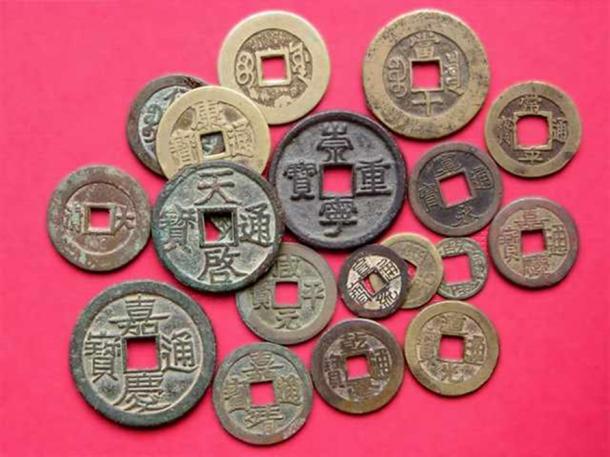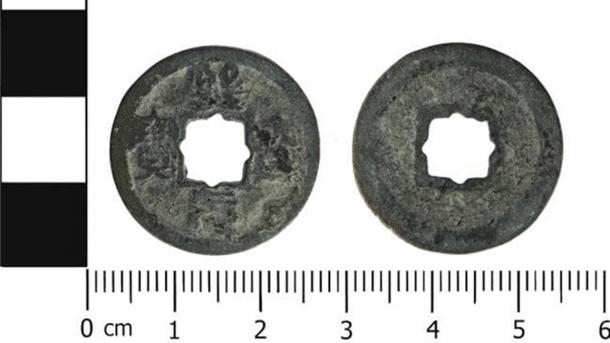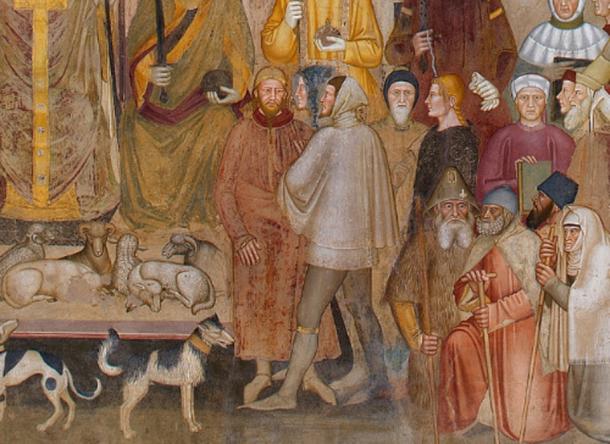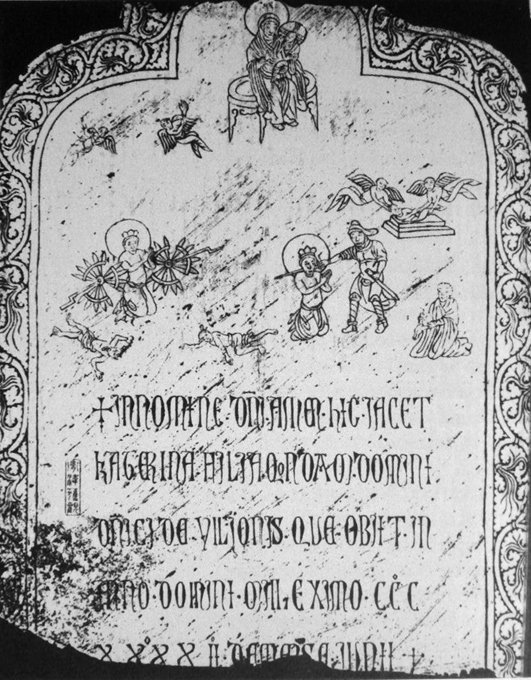Britain’s antiquities experts have mostly written them off as a loss from a curated collection, but the presence of two Chinese Northern Song dynasty (960 – 1127 AD) coins unearthed at separate sites in England have people wondering about the links between Medieval Asia and Britain. A Cambridge University archaeologist says these coins support the idea that Britain and east Asian groups were interacting in 13th and 14th century.
Are the Ancient Chinese Coins Genuine Losses?
The first coin was found in 2018 in Cheshire and is the first known example of a Chinese coin from the Northern Song dynasty period discovered in England, according to News.com.au. The Independent reports that the previous discovery is now joined by another 25mm copper-alloy coin that was recently discovered in a field in Buriton, near Petersfield, in Hampshire.

The Chinese coin discovered in Hampshire. ( Hampshire Cultural Trust )
University of Cambridge archaeologist Dr. Caitlin Green writes that neither of the coins “seem to be part of a ‘suspicious’ grouping of finds or deposited curated collection.” Dr. Green also notes that both of the 11th-century Chinese coins were unearthed in areas near other Medieval finds. The Hampshire Chinese coin was discovered “only around 20 miles away from the only confirmed medieval imported Chinese pottery from England, a sherd of blue-and-white porcelain from a small cup or bowl that was found in a late fourteenth-century context at Lower Brook Street, Winchester,” the archaeologist writes.
Regarding the Cheshire coin, Dr. Green explains that other random artifacts were also found near that coin, but “none of these other finds appear especially ‘suspicious’ or exotic.” They include: two Roman coins , weights from the Medieval and post-Medieval period, two pieces of Medieval copper-alloy casting waste, and some artifacts dating to the 16th – 18th centuries such as coins of Elizabeth I, rings, trade weights, and musket balls . “All told, the post-Roman finds from the site suggest relatively unremarkable activity on the site from c. 1300 to c. 1750, with nothing else found that might hint at a deliberate exotic deposition or loss from a curated collection”, Dr. Green has explained in her blog post.

Coins of China (Song through Qing dynasties), Japan and Korea. ( CC BY SA 3.0 )
Dr. Green also points out that the Northern Song dynasty minted so many coins that they continued to be in circulation well into the late fourteenth century. Taking these factors into consideration, the archaeologist writes that
“the fact that we now have two, rather than one, eleventh-century Northern Song dynasty coins from England, both recovered from what seem to be medieval to early modern sites, adds weight to the case for considering them genuinely ancient losses.”
Doubts Cast on the Chinese Coins
In 2018, the Portable Antiquities Scheme described the worn coin from Cheshire as a cast copper alloy piece minted during the Xining reign (1068 -1077 AD.) They declared “It is doubtful that this is a genuine medieval find (i.e. present in the country due to trade and lost accidentally) but more likely a more recent loss from an [sic] curated collection.” But Dr. Green worries the ‘loss from a curated collection’ explanation for unusual discoveries is overused, writing,
“although the possibility of a loss from a curated collection certainly cannot be discounted, it can be perhaps overused as an explanation for ‘surprising’ finds—as Martin Biddle has observed , ‘the proverbial absent-minded college don or cathedral canon, dropping items of his collection here, there and everywhere… has never seemed a very convincing character’, and in recent years the hyper-scepticism over finds of at least some exotic coins in Britain has abated somewhat.”

The Chinese coin found in Cheshire. (Portable Antiquities Scheme/ CC BY SA 4.0 )
Thus, Dr. Green decided to find out “whether it is at all possible that such a coin might have arrived in Britain during the medieval era , and […] review the evidence for contacts between East Asia and Britain in that period whatever our conclusion.”
Evidence of Cross-Cultural Interaction
Much of the evidence she has found for these Chinese coins being genuine finds comes from texts, but there is enough that it is worth considering Medieval Asian-British interaction. Dr. Green provides a series of literary examples. One of a few detailed on her blog is an account of a Flemish Franciscan missionary and explorer named William of Rubruck (who died circa 1293) encountering an Englishman named Basil while Rubruck visited Mongolia in 1254 AD. Basil told Rubruck he was living at Karakorum, (near Kharkhorin, Mongolia) the Mongol Empire capital, from 1235-1260.

Detail of Andrea di Bonaiuto’s fresco ‘The Way of Salvation/The Church Militant and the Church Triumphant’, c. 1365–1368. The figures at the center are identified by Jacques Paviot as an English knight of the Garter talking to a Mongol. ( Public Domain )
Apart from accounts of British people going to Asia, Dr. Green also provides evidence of Mongol diplomatic contacts with England in the 13th century. One written example comes from Guy Foulques, future Pope Clement IV, complaining of “unidentified Mongol envoys (‘Tartars’) actually crossing the Channel to visit England in 1264” while Foulques was still waiting for his own permission to cross.
Furthermore, it has been found that Edward II sent a letter to the Emperor of China on May 22, 1313 asking for his help and protection for the bishop William of Villeneuve. Of course, other Europeans were also in China from the late 13th century onwards, such as Marco Polo and Peter of Lucalongo as well as Genoese and Venetian merchants.

The tombstone of Katerina Ilioni, daughter of the Genoese merchant Domenico Ilioni, dated to 1342 and found at Yangzhou, China. ( Public Domain )
Finally, Dr. Green notes that that English coins from the late Medieval period have also been found in Vietnam.
Top Image: The worn cast copper alloy Chinese coin, from the Northern Song dynasty, minted during the Xining reign between 1068 and 1077 AD, and found in Cheshire, England. Source: PAS
Updated on January 1, 2021.
 RSS Feed
RSS Feed















 January 2nd, 2021
January 2nd, 2021  Awake Goy
Awake Goy  Posted in
Posted in  Tags:
Tags: 













